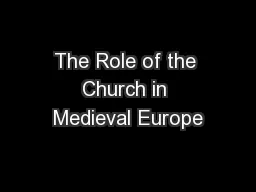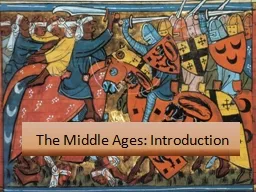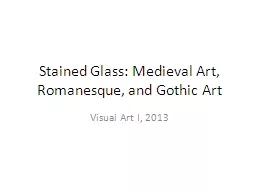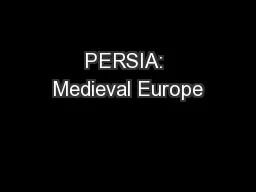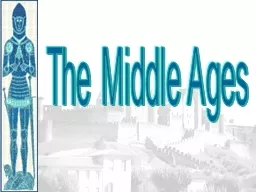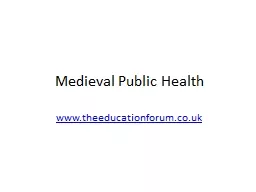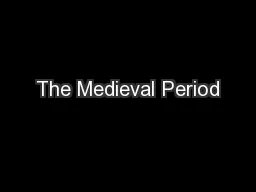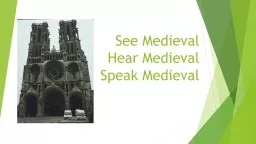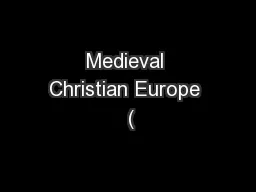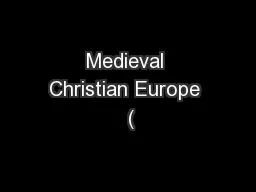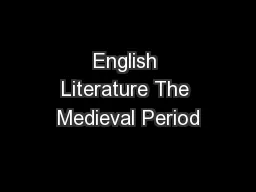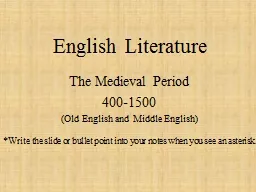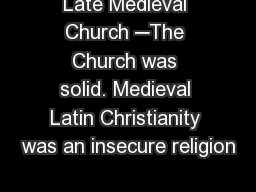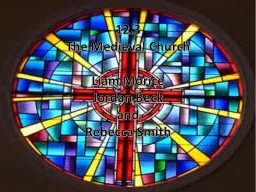PPT-The Role of the Church in Medieval Europe
Author : stefany-barnette | Published Date : 2016-04-09
Chapter 3 31 Introduction The church was the center of medieval life It was the center of activity in the community provided education explained world events like
Presentation Embed Code
Download Presentation
Download Presentation The PPT/PDF document "The Role of the Church in Medieval Europ..." is the property of its rightful owner. Permission is granted to download and print the materials on this website for personal, non-commercial use only, and to display it on your personal computer provided you do not modify the materials and that you retain all copyright notices contained in the materials. By downloading content from our website, you accept the terms of this agreement.
The Role of the Church in Medieval Europe: Transcript
Chapter 3 31 Introduction The church was the center of medieval life It was the center of activity in the community provided education explained world events like what and taught salvation belonged to those who followed its teaching. . The Medieval Church. . LOLLARDS AND HUSSITES. Powerpoint will be on the website. Lollard. Bible, late 14. th. century. . ‘One of the most developed criticisms of the medieval church came from the English . Vocabulary. Middle Ages Castle. Chivalry Vassal. Knight Feudalism. Fief Lord. Serf Manor. Coat of Arms. What was the Middle Ages the ‘Middle’ of?. The Middle Ages was the period of European history between 500AD and 1500AD.. Visual Art I, 2013. Early Medieval Art Vocabulary. Illumination. : colored illustrations, often containing gold and silver, that decorated manuscripts during the Early Middle Ages.. Vellum. : a fine parchment made from calfskin and used for writing, manuscript illumination and book binding.. European History. Classical Civilization. (Beginning of European Civilization . . Roman Empire). Medieval Europe. (. Fall of Rome . Before the Renaissance). Modern Times. (Renaissance . Today). Periodization. Early Middle Ages: 500 – 1000. (Dark Age). High Middle Ages: 1000 – 1250. Late Middle Ages: 1250 – 1500. . (Renaissance). Fragmentation of Western Europe: . “Dark Ages”. www.theeducationforum.co.uk. . Fall of the Roman Empire. The . Roman Empire. grew until it could no longer control its borders successfully. Barbarian tribes overran the western parts of the empire, and by AD 500 Europe consisted of many small, feuding tribal kingdoms. These kingdoms were often at war with each other.. (Old English and Middle English). Review of British History. The only new information here is that . the Britons were a Celtic people. England before the English. When the Roman legions arrived, they found the land inhabited by “Britons.” . Speak Medieval. Down goes Rome!. From fall of the Roman empire around 476 CE to the early 15. th. century. Often called the Middle Ages. Political instability, diseases, and withering commerce. Good times!. 330–1450. ). . Lesson 3 . The Medieval Christian Church. . Learning Objectives. Explain how the Christian Church shaped medieval life.. Understand monastic life and the influence of medieval monks and nuns.. 330–1450. ). . Lesson 7 . The Late Middle Ages: A Time of Upheaval. . Learning Objectives. Understand how the Black Death caused social and economic decline.. Describe the problems facing the Church in the late Middle Ages and how the Church reacted.. (Old English and Middle English). England before the English. When the Roman legions arrived, they found the land inhabited by “Britons.” . Today, the Britons are known as the . Celts. Stonehenge. Period. 400-1500. (Old English and Middle English). *Write the . slide or bullet point . into your notes when you see an . asterisk.*. Where does your language come from?. *. England . before the English. -Humanism- . anxious about an end always imminent.. ─The Catholic Church embraced a variety of standpoints.. ─Religion was regionalised.. ─Papacy recovered strenght from the Great Schism (1378-1417) and Conciliarism.. Liam Morice. Jordan Beck. and. R. ebecca . S. mith . Sacrament – One of the established formal rituals of the roman catholic church such as baptism holy communion or matrimony. . Abbot – The head of the monastery. .
Download Document
Here is the link to download the presentation.
"The Role of the Church in Medieval Europe"The content belongs to its owner. You may download and print it for personal use, without modification, and keep all copyright notices. By downloading, you agree to these terms.
Related Documents

